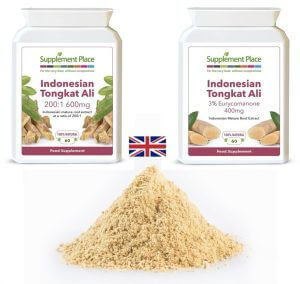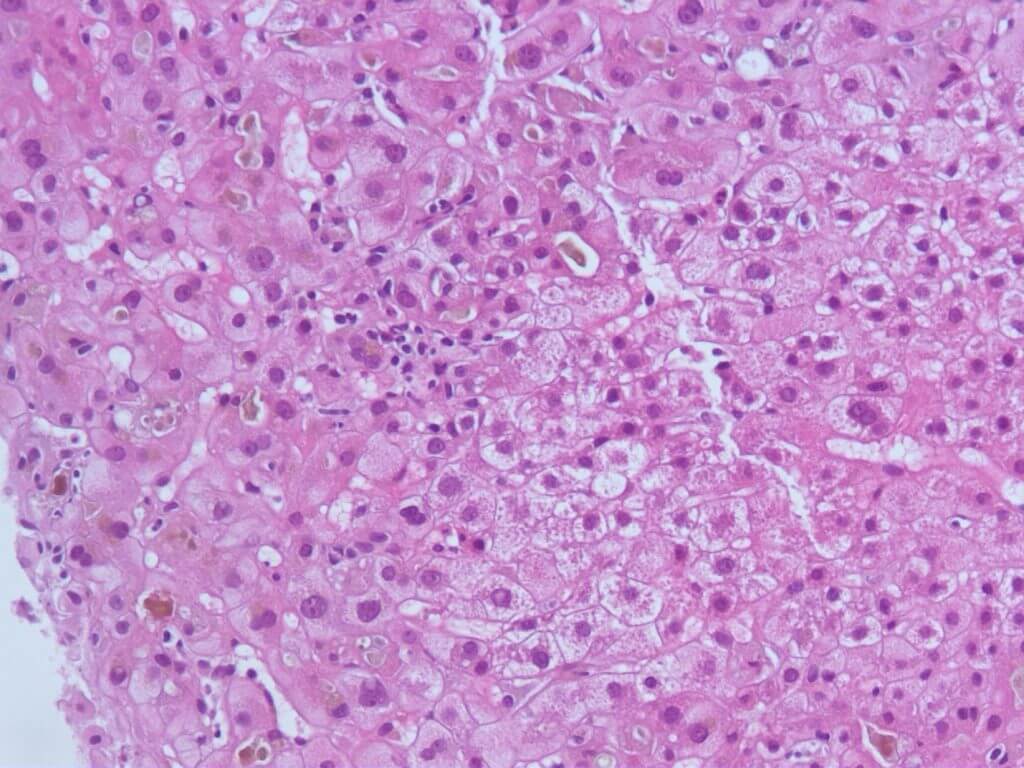

Ashwagandha is a popular herbal supplement in the UK, USA and Europe but its popularity has raised a serious concern after multiple cases of liver injury reported by users in recent years. This has led to Ashwagandha being banned in several countries.
This article investigates the effect and risks of Ashwagandha on liver functions from herbal-induced liver injuries (HILI) and other drug-induced liver injuries (DILI).
Ashwagandha (Withania somnifera), is an herb that has been used as a dietary supplement to promotes better mood, anxiety, sleep and other health benefits.
However, the safety limit or dosing requirements have not been well documented and prolonged daily use of Ashwagandha at doses of 500mg to 600mg daily raises concerns on liver toxicity against the backdrop of rising cases of liver injuries in the UK, Europe and US.
There are at least 15 reported cases of liver injuries and hepatobiliary disorders associated with Ashwagandha
World Health Organization (WHO)
While USFDA has not issued any warnings on Ashwagandha, UK authorities such as the Food Safety Authority (FSA) have called the public for more evidence to support a risk assessment study to assess the level of liver toxicity on Ashwagandha.
In a statement published on FSA’s website on 2nd Sept 2024, the UK Food Safety Authority warned users of the potential liver toxicity and that there are no safety levels established for ashwagandha in the time of writing.
According to FSA, businesses who wish to use ashwagandha in any foods (other than food supplements) would need to gain authorisation as a novel food for that use before introducing the product to the market in Great Britain.
There are no safe levels established or limits for Ashwagandha use in food supplements.
Food Safety Authority (FSA), UK
On that note, you should be careful when buying best-selling Ashwagandha supplements using KSM66 extract, or other standardized extracts due to the reported liver cases, which is getting common in recent months.
Rising cases of liver injury due to Ashwagandha were reported in USA, Japan, Iceland, Germany, India, Netherlands, Poland, and other EU countries suggest that the risks of liver toxicity are relatively high. This led Denmark to issue an official ban on Ashwagandha in April 2023 whilst Sweden and France are considering the same action in the near future.
Recent reports received by the Netherlands Food and Consumer Product Safety Authority of four liver toxicity cases of patients who used Ashwagandha at low doses raises further concerns from the health authorities, experts and medical professionals.
It means you may be exposed to liver injuries at a later stage (i.when you are old) if you keep consuming Ashwagandha daily on a long-term basis, even at a moderate recommended daily dose between 400mg to 600mg.
A recent 2024 paper published by the Journal of Education Health and Sports shares the dark side and risks of Ashwagandha. The study highlights the potential adverse effects of Ashwagandha from various studies published in the PubMed Database from the period of 2004-2024.
Key risks of Ashwagandha found in the study include hepatotoxicity, with cases of liver injury and jaundice; endocrine complications, such as thyrotoxicosis and adrenal insufficiency; and autoimmune responses, where the herb may trigger or exacerbate autoimmune conditions. Additionally, Ashwagandha poses severe risks for kidney transplant recipients, potentially leading to graft rejection.
Other mild-to-moderate risks of Ashwagandha arising from short-term use are associated with the state of mental health, lack of emotional responses, and causing users to feel detached, disconnected and emotionally “flat”.
If you have taken Ashwagandha in the form of extract, supplement or capsules, it is important for you to observe any symptoms related to liver complications. Commons symptoms of liver issues include:
Source: https://www.mayoclinic.org/diseases-conditions/liver-problems/symptoms-causes/syc-20374502
Several research studies have reported liver injury associated with the consumption of ashwagandha with most cases found to be hepatoxic and hepatocellular. Most patients who consumed Ashwagandha exhibited a range of liver issues, from severe jaundice to enduring cholestatic liver damage.

Whilst Ashwagandha cause cholestasis hepatitis, experts warned that prolonged cholestasis can evolve into vanishing bile duct syndrome and result in chronic liver injury, cirrhosis and need for liver transplantation.
In a patient case study published in Pharmaceutical Journal in 2023 showed two new cases of Ashwagandha hepatotoxicity, which reaffirms the rising of ashwagandha-induced liver injury cases.
In the first case, a 36-year-old man used ashwagandha capsules (450 mg, three times daily) for 6 months before he developed nausea, pruritus, and dark-colored urine. In the second case, a 30-year-old woman developed pruritus after 45 days of using ashwagandha capsules (450 mg).
In both cases, the Ashwagandha showed an increase of serum bilirubin and liver enzymes (aspartate transaminase (AST), alanine transaminase (ALT), and alkaline phosphatase (ALP), indicating disruption in the liver function.
Ashwagandha is not recommended as a sports supplement due to the high risk of liver toxicity in athletes and endurance runners.
AJ Brooke, Functional Health Expert (UK)
Health experts have concluded that ashwagandha can lead to drug-induced liver injury (DILI), with the liver damage being categorized as hepatocellular, characterized by pronounced hyperbilirubinemia, indicative of jaundice resulting from damaged liver cells.
In a study conducted in 2020, the effects of ashwagandha on liver function were explored in five patients, revealing elevated liver enzymes. Some of these patients were diagnosed with drug-induced liver damage, which subsequently regressed over an eight-month period.
The study concluded that ashwagandha-induced liver injury typically manifests as cholestatic, accompanied by severe jaundice and pruritus. Liver function tests returned to normal within 1 to 5 months after discontinuing ashwagandha use.
Ashwagandha affects thyroid hormone levels with potential thyroid toxicity, hypoglycaemic effects, and potential liver toxicity.
Food Safety Authority (FSA), UK
In another study in 2021 by Weber et al. presented a case involving a 40-year-old man who experienced acute liver injury after consuming ashwagandha extract (500 mg) for a year and Ashwagandha Now (450 mg, Now Foods) for an additional 20 days. The report documented the development of jaundice, pruritus, and an elevation of transaminase levels following ashwagandha consumption.
Our conclusion suggests that Ashwagandha presents high risk of liver injuries, particularly for aging adults who have underlying liver disease symptoms, and other medical conditions related to liver function.
Here is a summary of liver-related injuries caused by Ashwagandha based on patient records (cases). In most cases, taking consumption of ashwagandha in doses between 154mg to 500mg may induce common liver injury indicated by early symptoms such as jaundice, pruritus and fatigue. Whilst some of these liver-related symptoms may be acute or goes undetected for many years, it may lead to further severe chronic liver diseases if the patients continue taking ashwagandha on a long term basis.
| Patient’s Age & Gender | Dosage & Duration | Liver Injury Symptoms |
|---|---|---|
| 40 year-old man | 500mg (365 days) | Jaundice, pruritus |
| 40 year-old man | 450mg (20 days) | Jaundice, pruritus |
| 36 year-old man | 450mg (180 days) | Pruritus, dark-coloured urine, nausea |
| 30-year-old woman | 450mg (45 days) | Pruritus |
| 24-year-old-man | 450mg (7 days) | Jaundice, nausea |
| 62-year-old-woman | 450mg (5 days) | Jaundice, nausea, abdominal pain |
| 61-year-old-woman | 500mg (115 days) | Jaundice, fatigue, and pruritus |
| 39-year-old-woman | 154mg (42 days) | Jaundice, lethargy and pruritus |
There is a risk of liver injury and possible kidney damage from taking Ashwagandha more than 30 days. The risk exposure increases exponentially if you are taking Ashwagandha more than 6 months. US health experts warned users not to take ashwagandha more than 3 months, and it is best to take it for short duration (eg 7 days) to achieve your health goals (eg: during stressful situation). According to nutritionists and dietitians, ashwagandha is not designed or formulated to be taken as a daily supplement for long term use.
Based on patient reports, most patients recover from herbal-induced liver injures after stop taking Ashwagandha for 5 months or longer. In some cases, the liver function will return to normal after 1 month depending on your existing health condition. However, if you are regular alcohol user, or if you are diagnosed with liver issues, you may take longer to recover from liver injury.
Liver injury from Ashwagandha affects healthy patient as young as 20 years old to 65 based on reported cases in Japan, Germany, UK, USA, Iceland, Poland and several other countries.
Past patient records showed there is still risk of getting jaundice or toxic hepatitis by taking ashwagandha even if you had no prior history of liver disease, alcohol use or smoking.
It means you are still likely to experience asymptomatic or acute liver injuries from long term use of Ashwagandha at moderate doses of 400mg.
Whilst ashwagandha-induced hepatotoxicity liver injury cases have been reported worldwide, the percentage of severe injury cases is very small. However, the risk of getting liver injury from Ashwagandha is high if you are taking other a mix of herbal supplements on a daily basis. The risk exposure increases if you are a regular alcohol user, or if you are taking other form of medications.
Taking 1,000mg of Ashwagandha may increase the risk of liver injury. According to UK health authorities, there are no safety limit established to determine a safe dosage for Ashwagandha. Most studies showed that individuals taking between 400mg to 500mg of ashwagandha appear to be at risk of liver damage, as evident in the patient reports. Although some of these reported liver injury cases are rare, the asymptomatic cases sparked greater concerns on the safety of the current dosing protocols.
If you are diagnosed with liver injury, jaundice or other liver disease or symptoms, you should stop taking ashwagandha for a minimum of 5 to 8 months. This allows your liver to fully recover and function optimally. Please watch your diet by taking fruits and vegetables and avoid taking supplements in high doses.
Due to growing Ashwagandha liver injury cases, it is best to avoid taking Ashwagandha supplements if you care about your liver.
It is also important to note that if you have been drinking alcohol for more than 20 years, taking Ashwagandha may cause more damage to your liver.
Those who opt to continue taking ashwagandha as their daily supplement, it is best to exercise caution on the dosing protocol and observe any symptoms of failing a liver function, particularly in older men and women who have a history of liver disease.

Alex Kua leads AKARALI’s Global Partnership Community to help athletes, sports communities, and thousand of others optimize their well-being through evidence-based research that enables them to make better informed decisions. His legal and business consulting background underpins the rigorous data-driven approach in his writing – from hours of interviews, real-world performance data, and firsthand experiences of real people – offering actionable insights that connects clinical research, emerging health trends, and real-world applications. He is also an experienced researcher in herbal nutrition, with years of deep technical knowledge on Tongkat Ali (Eurycoma longifolia), including quality standards, industry benchmarks, lab tests, clinical trials, and the use of natural herbs by collaborating with top scientists, herbal experts, and nutritionists. As part of the core team behind AKARALI’s knowledge portal, he empowers people worldwide to access the benefits of high-quality herbal nutrition in a way that is effective, sustainable, and safe. He is also an avid runner, with regular participation in local sports communities and running events.
Our articles are third party reviewed by our panel of experts and medical advisors to ensure the facts are accurate and credible. These are validated against multiple source references which include but not limited to research studies, peer-reviewed journals, pre-clinical studies, clinical tests and other credible publications.
Our panel of medical advisors and experts are highly experienced in their individual fields. However, they do not provide any medical advice or recommendations arising from content published in this article.
Disclaimer:
The content published on this website is for educational purposes and should not be viewed, read, or seen as a prescription or constitute any form of medical advice. We recommend you consult your nearest GP or doctors before consuming Tongkat Ali or any products which contain Tongkat Ali. For further information, kindly refer to our Frequently Asked Questions (FAQ) for more information.